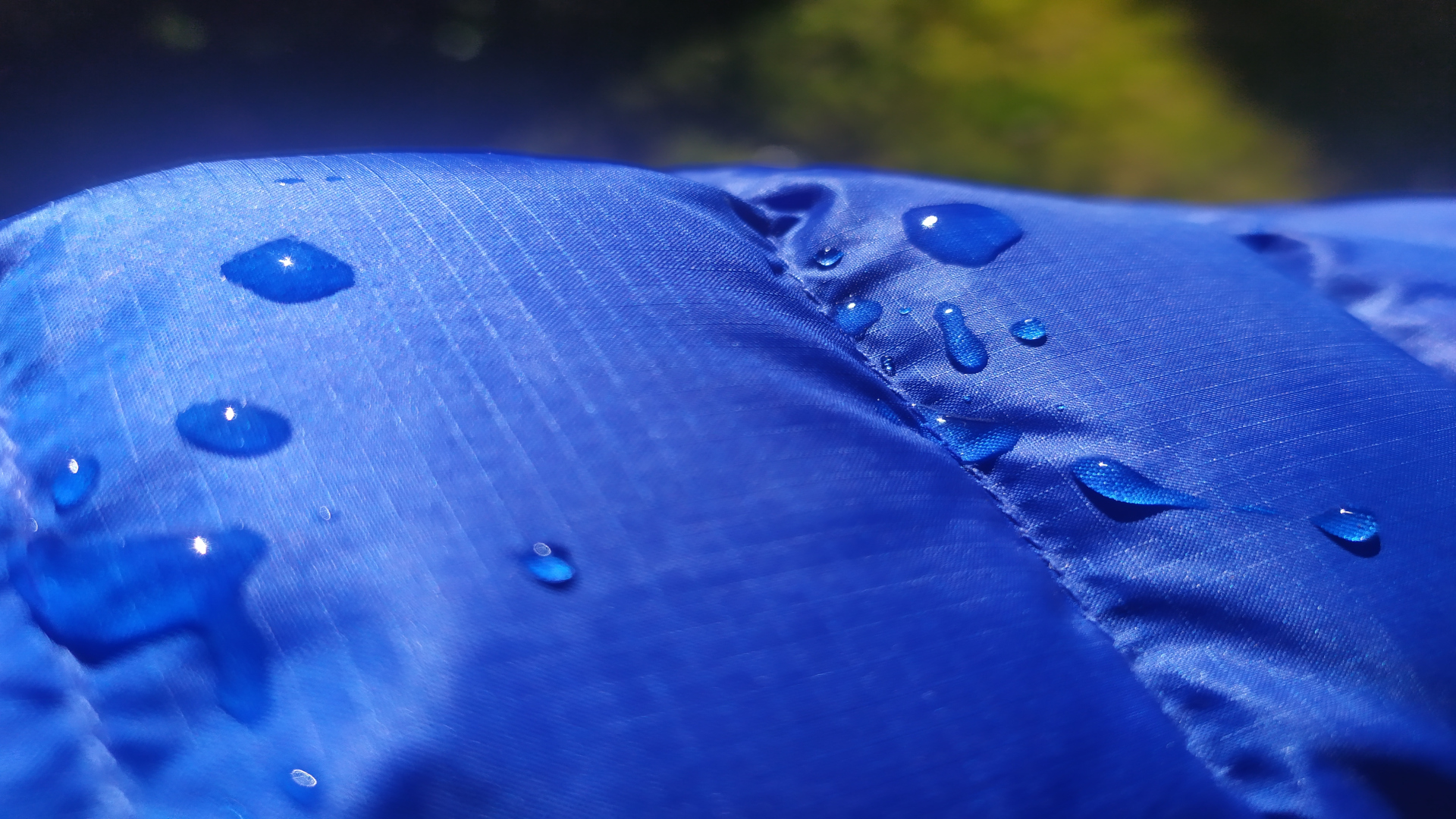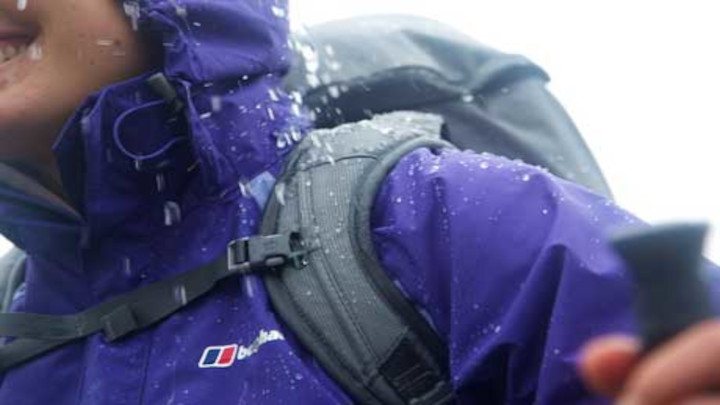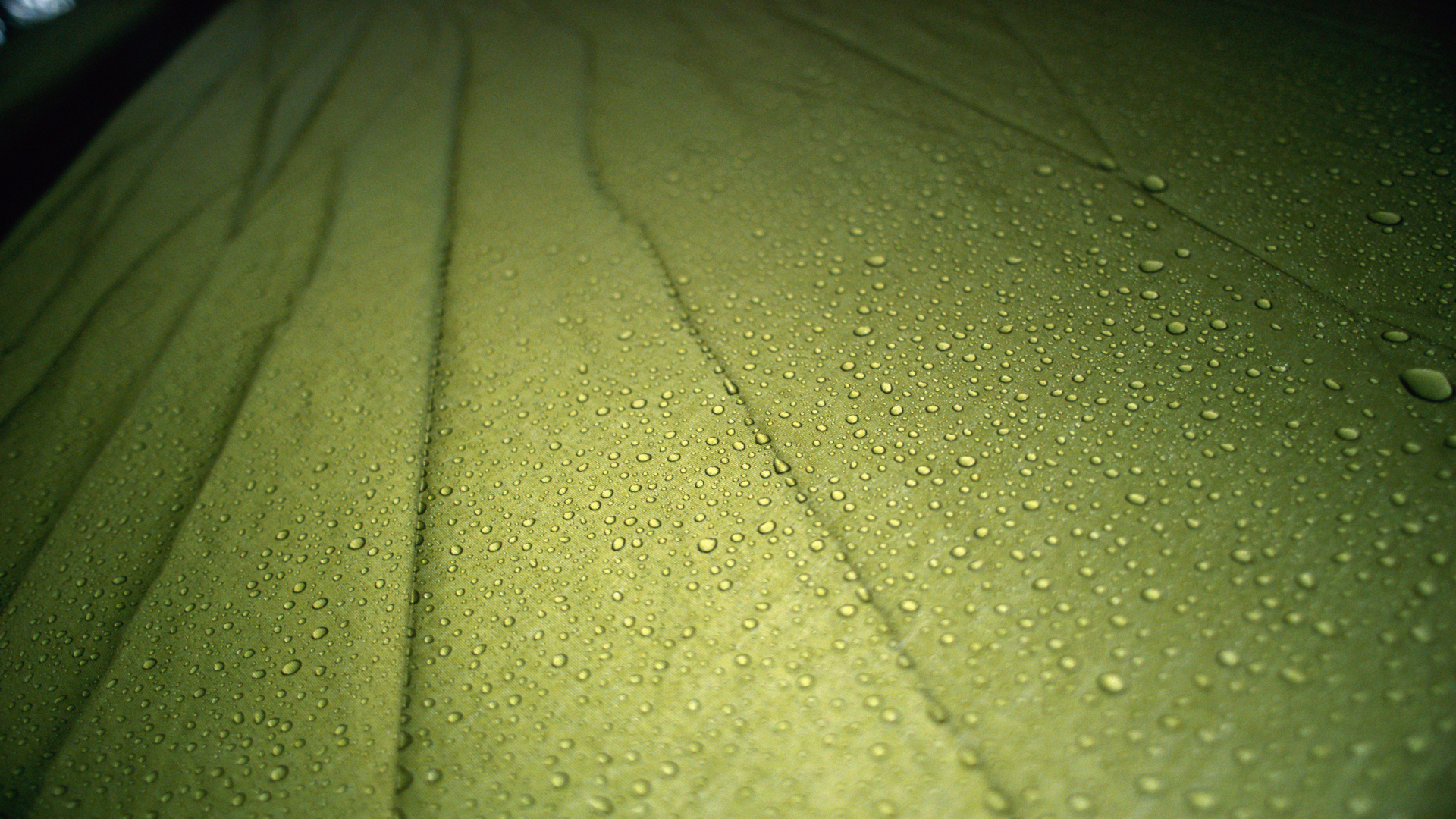
Buying new outdoor clothing and gear can throw up a host of confusing technologies, terminology and acronyms. DWR – durable water repellent – is frequently detailed on clothing and kit labels but do you really know what it is, what it does and how it is meant to work?
You'll see DWR treatment being used in the making of items such as waterproof jackets, the best tents and insulated jackets.
We take a closer look at DWR and reveal the ins and outs of the workings and usefulness of DWR.
What is DWR - durable water repellent?
DWR – which is an acronym for durable water repellent – refers to the coatings that are added to fabrics. It's a chemical treatment applied to the face fabric of garments, tents and sleeping bags to make them hydrophobic, or water resistant in other words.
You will notice how rain forms beads on the surface of a fabric and this happens because the DWR increases the angle of contact between the fabric and the moisture.
A low-contact angle between moisture and fabric allows the liquid to spread across the surface of the fabric and soak in, but with a high contact angle, the moisture 'beads up' as a droplet and rolls off the surface before it can saturate the weave.

Do we need DWR? The short answer
As with all outdoor technologies, whether or not you need clothing and gear with a DWR treatment will depend on what you’re doing.
If you plan to take part in outdoor activities, such as hiking or trail running, and the weather is likely to be wet then it's an unequivocal. Yes, you do.
DWR is useful in two scenarios: it's a great 'first line of defense' on waterproof jackets and rain pants, plus it's a useful 'just in case' add-on to garments or items of gear whose main purpose is not keeping you dry but may come into contact with water or moisture when on the trails or camping.
Do I need DWR? The longer answer
But you might be thinking, why do we need to add DWR to outdoor gear that already has a waterproof membrane? For example, isn't the use of Gore-Tex fabric enough to provide proper waterproofing?
Well, yes, but the DWR offers an extra barrier. It's there to assist the waterproof membrane in the fabric by helping to prevent rainfall saturating the face fabric. In very wet conditions, this could be the difference between staying dry and getting a soaking, and it also helps the fabric maintain breathability.
With non-waterproof gear such as softshell jackets or hiking pants, the addition of a DWR treatment makes the jacket and pants a little more versatile. You will gain a bit of rain protection without the need to put on a waterproof jacket or rain pants. This works well in damp conditions or in light rain, although you'll need to layer up with a fully waterproof jacket if there is very heavy rain.
You will also find that many good quality sleeping bags and tents inners have a DWR coating to prevent saturation by condensation.
DWR ratings – and what they mean

While not always included in product specifications, DWR ratings can help to give you an idea of how effective the DWR treatment on any garment will be –and also how long it will last.
DWR ratings are determined using a test that measures the amount of water that remains on the fabric after the water is sprayed onto the surface. Ratings contain two numbers; one that refers to the effectiveness of the treatment and one that refers to its durability.
Effectiveness is worked out by the percentage of fabric that remains dry after spraying. So, if 90% of the fabric is dry after spraying, the effectiveness rating is 90.
Durability is gauged by repeating the spray test after a certain number of washes. For example, a rating of 90/10 demonstrates that the fabric remained 90% dry in the spray test after 10 washes.
In simple terms, the higher the figures, the more durable and effective the DWR treatment will be.
How to maintain DWR - using a DIY treatment
Dirt, sweat, abrasion and weather exposure can each reduce the effectiveness of Durable Water Repellency over time. After a certain number of uses and washes, DWR-coated garments need a little TLC to maintain their ability to keep you dry.
If you notice that water is no longer beading on the surface of your DWR-coated gear or garments, you can rejuvenate the DWR with spray-on treatments, such as Nikwax TX Direct Spray-On or Rivivex DWR Spray, or with or wash-in treatments like Nikwax TX Direct Wash-In.







